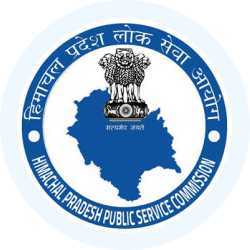HPPSC HPAS (Himachal Pardesh) Exam > HPPSC HPAS (Himachal Pardesh) Notes > HPPSC HPAS Preparation > British and Gurkhas
British and Gurkhas | HPPSC HPAS Preparation - HPPSC HPAS (Himachal Pardesh) PDF Download
| Table of contents |

|
| Gurkhas' Victory and Expansion |

|
| Conflict of Gurkha and British Interests |

|
| Gurkha-British War |

|
| Defeat of the Gurkhas |

|
| Treaty of Sugauli |

|
Gurkhas' Victory and Expansion
- Defeat of Sansar Chand (1806 A.D.): The Gurkhas, along with the Raja of Kahlur (Bilaspur), defeated Sansar Chand in 1806 A.D..
- Capture of Arki (1809 A.D.): In 1809 A.D., Amar Singh Thapa drove out the Rana of Bhagal State (present-day Solan District) and captured Arki.
- Attack on Sirmaur: Amar Singh Thapa sent his son Ranzor Singh to attack Sirmaur, forcing Raja Karam Prakash to flee to Bhuria (Ambala) to save his life. The Nahan and Jythak forts fell under Gurkha control.
- Occupation of Other Hill States: In 1810 A.D., the Gurkhas occupied areas in Hindur (Nalagarh), Jubbal, and Pundar (both in Shimla). In 1811 A.D., Amar Singh Thapa attacked Bushahar State and remained in Rampur until 1813 A.D. before returning to Arki.
- Conflict with British (1813 A.D.): In 1813 A.D., Amar Singh Thapa tried to capture six villages in Sirhind (Punjab), two of which were under British-Sikh control. This sparked a dispute between the Gurkhas and the British.

Conflict of Gurkha and British Interests
- Commercial Conflict: The Gurkhas were obstructing British commercial interests, especially their trade ties with Tibet, by controlling important passes connecting British India to Tibet. This made a Gurkha-British war inevitable.
- British Declaration of War (1814 A.D.): On 1 November 1814, the British declared war on the Gurkhas.
Question for British and GurkhasTry yourself: What event led to the declaration of war between the Gurkhas and the British in 1814 A.D.?View Solution
Gurkha-British War
- Early British Victory: Led by Major General David Ochterlony and Major General Rollo Gillespie, the British forces fought the Gurkhas. Major Gillespie, with 4400 soldiers, defeated the Gurkha army at the Kalinga fort, led by Bal Bhadra Thapa.
- Resistance from Ranzor Singh: Ranzor Singh, son of Amar Singh Thapa, inflicted heavy damage on the British army at Jythak fort.
- Kahlur's Initial Support for Gurkhas: Initially, the Kahlur State (Bilaspur) sided with the Gurkhas, allowing them to deal heavy blows to the British.
- British Road Construction: Later, the British, with the help of Sadder of Bilaspur, built a road from Kanuri to Nahan.
- British Attack on Arki (1815 A.D.): On 16 January 1815, under David Ochterlony, the British attacked Arki. Amar Singh Thapa then moved to Malaon fort, leading to the British capture of Taragarh and Ramgarh forts.
Defeat of the Gurkhas
- Surrender at Jubbal (12 March 1815): At Jubbal State, the British, with the help of Dangi Wazir and Primu, forced a hundred Gurkhas to surrender.
- Capture of Rawingarh Fort: The British attacked Rawingarh fort, which was under the control of Ranzor Singh Thapa. With support from Tikam Das, Badri, Dangi Wazir, and the Bushahr army, the British drove the Gurkhas out of the fort.
- Gurkha Surrender at Saran Ka Tiba: In Rampur-Kotgarh, a joint army of Bashahar and Kullu forced the Gurkhas to surrender at Saran Ka Tiba.
- Joint Attack on Gurkhas: The British, along with Raja Ram Sharan of Hindur and the Raja of Kahlur, launched a combined attack on the Gurkhas. Amar Singh Thapa fled Ramgarh and took refuge in Malaon fort.
- Death of Bhakti Thapa: The death of Bhakti Thapa, a brave Gurkha leader, at Malaon fort was a significant loss for the Gurkhas. Coupled with defeats in Kumaon and the soldiers' reluctance to continue fighting, Amar Singh Thapa was forced to surrender.
Treaty of Sugauli

- Sugauli Treaty (28 November 1815): On 28 November 1815, Amar Singh Thapa signed the Sugauli Treaty with British Major General David Ochterlony for a respectful and safe return for himself and his son, Ranzor Singh, to Nepal. The Gurkhas at Jaythak fort were also given safe passage.
- Conditions of the Treaty: The treaty allowed the Gurkhas to take their personal belongings with them. However, the British gave Nepal a 15-day ultimatum to ratify the treaty. The delay gave the British an excuse to start a second military campaign.
- Second Treaty of Sugauli (2 December 1815): On 2 December 1815, the second Treaty of Sugauli was signed and later ratified on 4 March 1816. The treaty marked the end of the Anglo-Nepalese War (1814-1816). Raj Guru Gajraj Mishra, assisted by Chandra Sekher Upadhayaya, signed on behalf of Nepal, while Col. Paris Bradshaw signed for the East India Company.
Question for British and GurkhasTry yourself: Which event led to the defeat of the Gurkhas in the Gurkha-British War?View Solution
The document British and Gurkhas | HPPSC HPAS Preparation - HPPSC HPAS (Himachal Pardesh) is a part of the HPPSC HPAS (Himachal Pardesh) Course HPPSC HPAS Preparation.
All you need of HPPSC HPAS (Himachal Pardesh) at this link: HPPSC HPAS (Himachal Pardesh)

|
Explore Courses for HPPSC HPAS (Himachal Pardesh) exam
|

|
Signup for Free!
Signup to see your scores go up within 7 days! Learn & Practice with 1000+ FREE Notes, Videos & Tests.
Related Searches
















